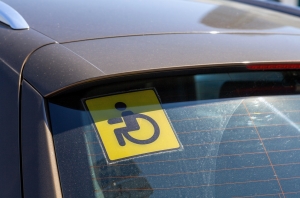When it comes to purchasing electrical products, appliances, and safety equipment, understanding the different types of UL (Underwriters Laboratories) markings is essential. Many consumers may have encountered terms like "UL Certified," "UL Listed," or "UL Recognized," but what do these labels really mean? And why should you care about them when making buying decisions?
In this article, we will break down the differences between UL Certified, UL Listed, and UL Recognized, and help you understand how each term applies to the products you're considering. We'll also explore how these certifications can impact your purchasing choices and the safety standards of the products you use every day.
What is UL?
Before diving into the differences between UL Certified, UL Listed, and UL Recognized, let's start with a brief overview of Underwriters Laboratories (UL).
UL is an independent global safety science company that has been around for over 100 years. It specializes in evaluating products to ensure they meet specific safety and performance standards. UL tests a variety of products, from electrical appliances and electronics to building materials and personal protective equipment.
When a product earns a UL mark, it signifies that the product has been tested and meets UL’s rigorous safety standards. However, not all UL marks are created equal, and understanding the distinctions between them can help you make more informed purchasing decisions.
UL Certified
UL Certified is a term used to indicate that a product has undergone specific testing and meets UL’s safety standards. However, it is a somewhat less common designation compared to "UL Listed" and "UL Recognized." When a product is UL Certified, it means that it has been evaluated and determined to be safe for its intended use according to UL’s testing protocols.
While "UL Certified" is not a specific category of UL approval, it is sometimes used interchangeably with other terms like UL Listed, especially in some industry contexts. It typically refers to products that meet UL’s safety requirements for a particular application, such as the certification of safety components, materials, or systems.
For example, a UL Certified battery might meet specific performance requirements for a particular device, but it may not carry the UL Listed mark, which denotes broader safety compliance.
UL Listed
When a product is UL Listed, it means that the product has been tested and approved for safety under UL’s safety standards. This is the most common and recognized form of UL approval. UL Listed products are subject to continuous inspection and evaluation to ensure they continue to meet the required safety standards.
UL Listed products are deemed safe for the public, and their usage is generally approved by regulatory authorities. A UL Listed product is designed to meet the specific safety and operational requirements established by UL for the intended application, such as electrical appliances, fire alarms, or household devices.
For instance, if you're purchasing an electric oven or a microwave, you will likely see the UL Listed mark on the product. This means that the product has been tested for electrical safety, fire resistance, and other potential hazards. The UL Listed mark is an assurance that the product complies with all applicable safety regulations.
UL Recognized
UL Recognized products, while still bearing UL’s seal of approval, are not as widely accepted as UL Listed products. UL Recognized is used primarily for components or materials that are meant to be integrated into a larger product. Rather than indicating the overall safety of the entire product, the UL Recognized mark indicates that a particular component—such as a wire, transformer, or power supply—has been tested and meets UL’s safety standards for specific uses.
In other words, UL Recognized applies to parts and materials that are used within a UL Listed or certified product, but these components are not necessarily intended for standalone use. A UL Recognized component might not have the full range of testing that a UL Listed product undergoes, but it meets safety requirements for its role in a larger system.
For example, a UL Recognized power supply might be used in a UL Listed product, but the power supply itself may not carry the same comprehensive UL Listed mark. Instead, it indicates that the part is recognized by UL for use in a safe and compliant manner when incorporated into a larger system.
Key Differences Between UL Certified, UL Listed, and UL Recognized
Let’s recap the key differences between these three UL terms:
- UL Certified:
- Refers to products that have been evaluated by UL and meet specific safety standards.
- Less common term and sometimes used interchangeably with UL Listed.
- Generally used for components, materials, or systems that meet UL safety standards for specific applications.
- UL Listed:
- The most common and widely recognized UL mark.
- Indicates that a product has been tested and approved for safety in its entirety, meeting all UL safety standards.
- Applies to finished products that are designed for standalone use, such as household appliances or fire alarms.
- UL Recognized:
- Applies to components, materials, or parts that are used in larger systems or products.
- Indicates that the component or material has been tested and meets UL safety standards for specific applications.
- Not a broad approval for the entire product but a certification for parts or components.
Why Does It Matter?
Understanding these UL marks is important for consumers because it directly impacts the safety of the products you buy. UL Listed products provide the most comprehensive level of safety assurance, ensuring that the product as a whole meets UL’s rigorous testing requirements.
On the other hand, UL Recognized products may only be suitable when used as part of a larger UL Listed system. If you’re buying a product to use on its own, such as a refrigerator or electrical device, looking for the UL Listed mark is the best option.
Additionally, products with UL Certification are often considered safe for specific applications, but it’s important to check what the certification actually covers.
How to Verify UL Certification
If you're ever in doubt about a product’s UL certification, there are a few steps you can take to verify its authenticity:
- Look for the UL Mark: A legitimate UL mark should be clearly visible on the product. Be wary of fake or misleading labels.
- Check the UL Database: You can search UL's official online database to verify whether a product has been UL Listed, Certified, or Recognized.
- Review Product Documentation: Manufacturers should provide documentation that explains the UL designation of their products, so you can confirm their safety compliance.
Conclusion
In summary, the difference between UL Certified, UL Listed, and UL Recognized can seem subtle, but it’s important to understand how each designation applies to the products you purchase. UL Listed products are the gold standard for consumer safety, ensuring that the product has passed rigorous testing and is safe for use. UL Recognized products apply to specific components and materials used in larger systems, while UL Certified refers to products that meet UL’s safety standards for particular applications.
When shopping for electrical devices or safety equipment, always look for the appropriate UL mark to ensure you’re buying a product that meets the necessary safety standards. This can give you peace of mind and help you make more informed decisions about the products you use in your home or business.
By understanding these UL designations, you can ensure the safety and reliability of the products you buy, keeping you and your family safe from potential hazards.






